Panama Canal Authority
The Panama Canal Authority (Spanish: Autoridad del Canal de Panamá, or ACP) is a state-owned entity responsible for managing, operating, and maintaining the Panama Canal. It was established in 1997 by the Panamanian government following the signing of the Torrijos-Carter Treaties with the United States, which led to the transfer of control of the canal from the U.S. to Panama at the end of 1999.
Here are some key points about the Panama Canal Authority:
Organizational Structure:
- Governance: The ACP is governed by an 11-member board of directors. Board members are appointed in a manner designed to ensure both governmental oversight and independent professional management.
- Leadership: The organization's day-to-day operations are managed by an Administrator and Deputy Administrator, who are appointed by the Board.
Responsibilities:
- Operations: The ACP is tasked with ensuring the smooth and safe navigation of vessels through the Panama Canal, which is one of the most significant maritime routes in the world.
- Maintenance and Development: The authority is responsible for maintaining and improving the canal's infrastructure. This includes routine maintenance, as well as large-scale projects such as the Panama Canal Expansion, also known as the Third Set of Locks project which was completed in 2016. This expanded the canal’s capacity by allowing the passage of larger "New Panamax" ships.
- Economic Role: Besides facilitating global maritime trade, the canal is a crucial revenue generator for Panama. Tolls and related services provide substantial income for the country.
Economic Impact:
- Revenue: The ACP generates its revenue primarily through tolls charged to vessels transiting the canal. They also earn from various services such as tug assistance, line handling, pilotage, and provisioning.
- National Contribution: Revenues from the canal contribute significantly to Panama's national economy, supporting various public services and economic development initiatives.
Environmental and Social Responsibilities:
- Sustainability: The ACP engages in sustainability efforts aimed at protecting the canal's watershed and reducing the environmental impact of its operations. This includes water conservation initiatives and efforts to reduce emissions from ships.
- Community Engagement: The ACP works on community development projects and educational programs to benefit the communities around the canal.
Strategic Importance:
- Global Trade: The Panama Canal is a critical conduit for international maritime trade, significantly shortening the maritime journey between the Atlantic and Pacific Oceans. This strategic importance has only increased with the canal’s expansion to accommodate larger vessels.
By effectively managing this vital waterway, the Panama Canal Authority plays a crucial role not only in Panama's economy but also in facilitating global commerce.
Services
Panama Canal Authority News
Summing Up the U.S., the Panama Canal and China
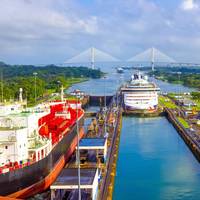
Some U.S. lawmakers and officials are touting a nearly half-century-old treaty between the United States and Panama to justify the Trump administration's threat to reclaim the Panama Canal - provided it can show the strategic waterway's operation is under threat.Others, however, say hurdles would loom for any bid to use the 1977 Panama Canal Neutrality Treaty, which took effect in 1999 and guarantees that the canal would remain neutral and open to all ships from all countries…
Rubio's LatAm, Panama Trip to Prioritize 'America First'
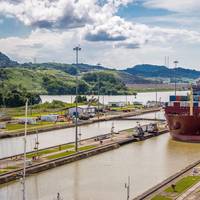
When Marco Rubio arrives in Latin America this weekend on his first foreign trip as Donald Trump's secretary of state, he'll find a region reeling from the new administration's shock-and-awe approach to diplomacy.In the first days of Trump's second term, the new president has doubled down on his intention to reclaim the Panama Canal, angered Brazilians by returning migrants in shackles and briefly…
Panama Canal Slots Going Unfilled
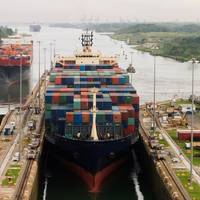
The average number of vessels that passed through the Panama Canal in December increased to 34.2 per day, according to a notice from its authority seen on Monday, but the waterway did not fill all the slots on offer, a sign that some ships continue taking alternative routes.The canal, the world's second busiest and the only interoceanic way that operates with freshwater, between August and September…
Trump on Panama, Greenland: All Options on Table
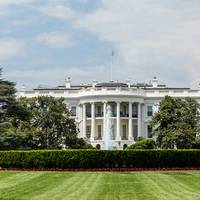
President-elect Donald Trump declined on Monday to rule out military or economic action as part of his avowed desire to have the U.S. take back control of the Panama Canal and acquire Danish-controlled Greenland.Asked at a press conference whether he would avoid using military or economic coercion in Panama and Greenland, Trump said, "No, I can't assure you on either of those two. But I can say this…
Trump Threatens to Retake Control of Panama Canal
President-elect Donald Trump threatened to reassert U.S. control over the Panama Canal on Sunday, accusing Panama of charging excessive rates to use the Central…
Panama Canal Battles Ongoing Drought
The lush river valleys of El Zaino y La Arenosa in western Panama, home to hundreds of families that eke out a living farming, fishing and raising cattle, could…
Panama Canal's Big Plans to Address Drought
The lush river valleys of El Zaino y La Arenosa in western Panama, home to hundreds of families that eke out a living farming, fishing and raising cattle, could…
Panama Canal Eyes Doubling Container Transits
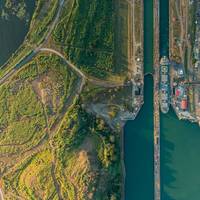
The Panama Canal Authority could double in coming years the number of containers that move through the commercial waterway that links the Pacific and the Atlantic oceans, the canal's chief told a maritime conference.The authority, which has an $8 billion investment plan, is putting in place a water conservation strategy following a severe drought that forced ships between late 2023 and early 2024 to take alternative routes between the United States and Asia.As part of that…
ACP: Panama Canal Could Double Box Transits
The Panama Canal Authority could double in coming years the number of containers that move through the key East-West commercial waterway, the canal's chief told…
MSC Container Ship Sets Panama Canal Record
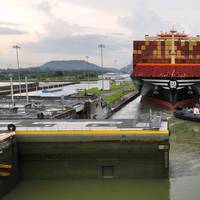
The MSC Marie transited through the Panama Canal on August 30, setting a new record for the largest-capacity container ship to sail the route.The 366-meter (1,200 feet) Neopanamax ship has a width of 51 meters (167.4 feet) and a maximum capacity of 17,640 TEUs.The record was previously held by the Ever Max which made the transit at a capacity of 17,312 TEUs in August 2023.The MSC Marie sailed from the port of Manzanillo in Mexico.
Panama Canal to Increase Daily Transits to 27
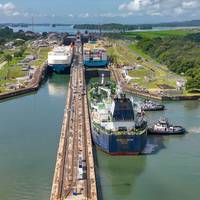
In response to the current and projected level of Gatun Lake, the Panama Canal Authority has announced, through Notice to Shipping Lines No. A-08-2024, that it will increase the number of daily slots available in the Panamax locks.Two additional slots will be offered by auction for transit dates scheduled starting March 18, and one additional slot will be available for transits scheduled starting March 25.
Panama Updates its General Merchant Marine Law

The Panama Maritime Authority (AMP) and Panama’s main maritime associations concluded the meetings for the revision of the General Merchant Marine Law, law 57 of August 6, 2008.A total of 188 articles were reviewed; 70 were modified; 10 were eliminated and more than 12 new articles were proposed, and all of them were approved in consensus. These amendments aim at improving the competitiveness of the…
CMA CGM Containership Breaks Panama Canal Cargo Capacity Record
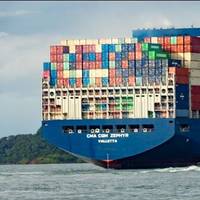
Last month, CMA CGM’s Zephyr became the largest containership by cargo capacity to ever transit the Panama Canal.The Neopanamax containership Zephyr has a total capacity of 16,285 TEUs. After calling at the U.S. ports of New York and Savannah, the Zephyr sailed back southbound through the Canal, from the Atlantic to the Pacific Ocean, in route to Qingdao, China. On July 1, the vessel completed its return trip through the Expanded Canal’s Neopanamax Locks…
Panama Canal Extends Max Length, Increases Draft for Neopanamax Locks

The Panama Canal has increased the maximum allowable length for vessels transiting the Neopanamax Locks. Since May 21, the maximum length overall (LOA) for commercial and noncommercial vessels acceptable for regular transits of the Neopanamax Locks is 370.33 meters (1,215 feet), up from 367.28 meters (1,205 feet).The increase, which comes nearly five years after the canal's expansion, means that now 96.8% of the world’s fleet of containerships can transit the Panama Canal.
Panama Canal Secures Steady Draft
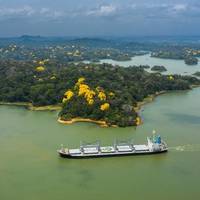
The Panama Canal has emerged from its fifth driest year in 70 equipped to ensure a competitive draft, and thus steady operations, after draft concerns led to the implementation of water-saving measures.Having an operational level of water and transit reliability in the second half of 2020 will be critical for the waterway as it advances its search for long-term water solutions and prepares for coronavirus-driven shifts in trade…
Ships to Face 30% Higher Costs at Panama
The Panama Canal will begin collecting a freshwater surcharge from ships using the waterway from 15th February, as part of actions to address a scarcity of rainfall…
First Woman Deputy Administrator at Panama Canal
Ilya Espino de Marotta, who played a lead role in the expansions of the Panama Canal took office on January 1 as the first woman deputy administrator of the…
Maritime History & the Panama Canal

The Panama Canal is a strategic crossroads for maritime traffic, and is arguably one of the most important maritime developments in the past century. Here we take a deeper dive into the history behind that famous strip of waterway.The present canal, which saw its first vessel transits in 1914, along with possible alternatives through Nicaragua and Mexico, had actually been on the minds of merchants, explorers and military/political strategists since the Age of Exploration in early 1500’s.
Panama Canal Reports Record FY 2019 Tonnage
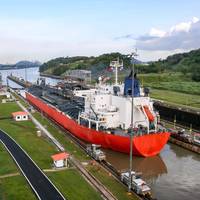
The Panama Canal has closed the 2019 fiscal year (FY19) with a record tonnage of 469 million Panama Canal tons (PC/UMS), a 6.2 percent increase compared to FY2018.With this figure, the waterway exceeds the 450.7 million PC/UMS tons projection for FY2019, as well as the record tonnage of 442 million PC/UMS tons registered in the previous fiscal year. These record-setting results reflect the Canal workforce's commitment to efficiency and ongoing investments in infrastructure…
Panama Canal Signs MoU with Rotterdam Port
The Panama Canal and the Port of Rotterdam signed a Memorandum Understanding (MOU) to promote international trade between Europe and the West Coast of South America.Through this agreement…





